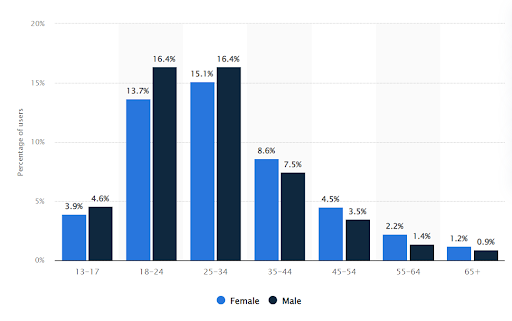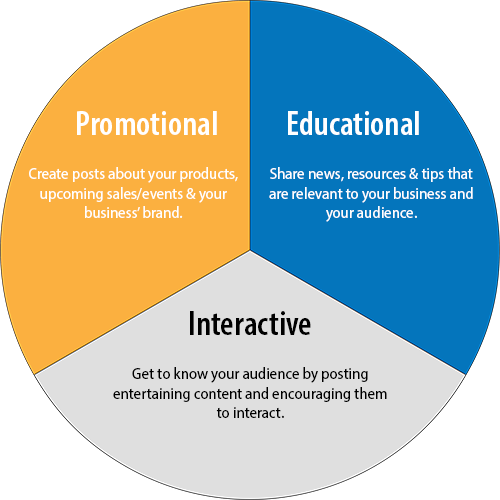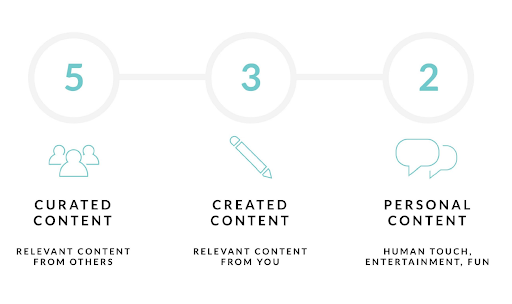Are you tired of winging it when publishing social media content?
A social media content calendar is the need of the hour to ensure that your content is published consistently and on time.
It’s a smart way to schedule your social posts as it eliminates the stress involved in coming up with content on the fly every time.
Additionally, consistent content publishing can help maintain an engaged audience and generate quality leads.
So, how can you create a social media content calendar that’s effective for your business?
Let’s find out.
1. Understand Your Business for Better Functionality
Social media content calendars look different for every business. A small business, for instance, will have a much simpler content calendar than a major brand with an entire social media marketing team and loads of custom and curated content.
Being realistic about your available time and resources will allow you to create a functional calendar that will deliver on all your marketing ideas.
Such details may include:
- Platform content format
- Team members and their roles
- Date
- Copy
- Visuals
- Linking strategies
- Geo-targeting
- Time and time zones
2. Understand Your Audience and Their Content Needs
An effective social media calendar should help you create impactful, relatable content for your audience. That’s why it’s critical that you first understand your target audience and their interests.
These factors will help you understand their content preferences and improve the chances of your content striking a chord with them.
For instance, most Instagram users are younger than Facebook users.
 Image via Statista
Image via Statista
Do you want to learn more about your audience?
A little research will go a long way. Semrush, Google Analytics, or other analytics tools can provide incredible insights to help you understand your audience’s demographics.
Track your competitors is another excellent strategy for resourcing content insights. Check their recent content successes and flops for a better idea of what kind of content your audience is currently consuming.
What’s more?
You can also understand your audience further by leveraging tools for social media listening. These tools can help you identify relevant audience conversations, providing insight into their challenges, needs, and interests related to your brand.
You can use all of this information to create your content calendar!
Finally, you’d need to create unique content based on these insights to drive your reach and engagement.
3. Perform An Audit of Your Content and Social Media Accounts
A thorough audit of your existing social media accounts is crucial in creating an effective content calendar. You may find yourself having to enhance or restructure your content strategy through the insights you gather here.
It’s best to utilize a social media audit tool for better efficiency and accuracy than doing it manually. Some of the things you should identify are:
- The most successful content and tactics on each platform so far
- The number of posts published on each platform every week
- The current posting time and its impact on audience engagement and conversion
- Platforms with positive growth and the platforms showing little or no engagement
- Gaps and areas that require improvement
- The platform with the biggest active audiences
The audit you conduct should help you find this data to figure out what needs to be tweaked. You can incorporate these changes into your social media content calendar.
4. Involve Your Team in the Creation Process
Do you want to create a social media content calendar that inspires the entire team to work with you?
Involve them in the creation process! Source content ideas from the people accountable for various tasks on your team.
Make sure to create a simple system where all the team members have access to the best tools to help them contribute to your efforts. Copywriters and graphic designers, for instance, should have access to the right parts of the calendar to make collaboration easier.
Provide avenues for continuous feedback from all the stakeholders to help identify the areas where you may need to pull back or add extra flare.
Again, give your team access to customer feedback from the various platforms for faster and easier calendar adjustments. Including your team members in the content calendar development and execution process ensures their ongoing support.
5. Choose Your Content Mix Ratios
Selecting the right type of content for your business is only one part of the puzzle. You also need a smart content mix ratio to help determine how often you post different kinds of content. Defining your content mix is essential to creating an effective social media content calendar.
But what’s a content mix ratio?
It’s pretty simple.
A content mix ratio is a strategy that allows you to balance promotional content and other softer or valuable posts.
Why is it important?
You don’t want to push too much promotional content that you scare away your audience.
The secret here is in “sell without selling” to keep your audience entertained and generate real leads simultaneously.
Here’s a list of a few social media posting ratios that follow specific rules that you can try out.
The 4-1-1 Approach
The rule states that for every six postings you publish on your social accounts, every four should be relevant content that entertains and educates, one soft sell, and one hard sell.
For instance, you could make engaging videos that are relevant to your audience and can entertain them. Videos tend to be far more engaging than other forms of content, making them great for driving your engagement and growing your reach.
A soft sell post creates a bond with your audience by showcasing your products and services. For instance, you could post how one of your products has helped your customers.
On the other hand, a hard sell persuades a potential customer into making a purchase soon. For example, you could drive this urgency by sharing details about a sale.
The Rule of the Third
Simply put, ⅓ of your posts should focus on your brand and conversions, ⅓ on content from thought leaders or new ideas, and ⅓ on personal interactions with your customers.
 Image via Wyoming SBDC Network
Image via Wyoming SBDC Network
The 5-3-2 Approach
This strategy works well for Facebook and Twitter. For every ten posts you publish, five should be curated posts relevant to your audience, three of your promotional content, and two should be personalized content that’s not promotional.
 Image via Gregory Kiep
Image via Gregory Kiep
The 80 – 20 Rule
The rule says that 80% of your content should be informative, entertaining, and educational, while 20% should be self-promotional content.
Try a mix-up of ratios on different platforms to get the most out of them. Bringing enough variations into your content formats and types ensures that your audience doesn’t lose interest.
These strategies can help you develop your social media content calendar well.
6. Choose the Right Tools
To make an effective social media content calendar, you need the right tools to breathe life into it.
The amount of detail you’d like on your calendar and other additional social media management features should help you choose the best tool for the job.
Consider picking a tool that will also allow you to share your ideas with your team on the go and make quick content decisions.
Some of the tools you can use to create an effective social media content calendar include:
These are just a few of the social media tools in the market today. Screen their features thoroughly to ensure that you can create the best spruced-up content for your social media accounts.
7. Create a Consistent Posting Schedule
Posting consistency is key to maintaining a robust social media presence and driving your engagement and growth. And this consistent posting schedule must reflect in your social media content calendar.
You don’t want to leave room for your audience to forget your brand. But you also don’t want them to feel overwhelmed with the number of posts they see from your brand. The key is to strike a balance.
This level of consistency also allows you to build your brand’s community faster, provide room for customer feedback and engagement, and lead to better conversion rates.
For instance, if you’ve scheduled Mondays for fun videos, respect this schedule and apply it to all the Mondays of the month.
8. Make Short-Term Goals for Each Content Piece
Your social media engagements are generally geared towards achieving two long-term goals—more leads and conversions.
However, it’s essential to create a goal for each piece of content you publish.
This strategy helps you know what’s working and based on that, you can make changes to your overall marketing strategy.
The short-term goals should be small and smart with realistic timelines and end goals. Your goals may include tracking the reach, engagement, and even number of clicks.
And why should you create these goals?
Using them empowers you to see if your content calendar needs to be modified to reach your goals or if you’re on track.
9. Try Out New Ideas and Re-Strategize Where Necessary
It’s normal to hit a creative rut when searching for new and engaging ideas for your audience, especially when marketing on several diverse social media platforms.
That’s why it’s essential to keep trying out new ideas to bring uniqueness to the calendar while continually improving your content’s performance.
What’s more?
A content calendar doesn’t work in the set-and-forget mode. Instead, you need to regularly keep revisiting and revising it to ensure that it only includes the best content types on an optimized posting schedule.
The key is to remember that while your posts may not hit all the time, you still have your audience’s attention, and you can test new ideas anytime.
For instance, a post that flopped a few months ago, once recycled and published on another platform, may prove an instant hit with your audience and possibly create a well of inspiration for a long time to come.
But how do you find out what’s working and what isn’t?
You can utilize data analytics tools to give you real-time insight into what works for your audience.
You can use this to identify the best posts and run ads to boost their reach and engagement further.
Ready to Utilize These Strategies to Create An Effective Social Media Content Calendar?
If you’re leveraging social media marketing, a content calendar is essential.
To start, you should understand your audience and business. You must also identify current gaps in your content and involve your team in creating the calendar.
It’s a good idea to incorporate a content mix in the calendar and use tools to publish content consistently and at the correct times.
Are you interested in learning more about social media content creation? Join us at one of our upcoming social media strategy conferences.









